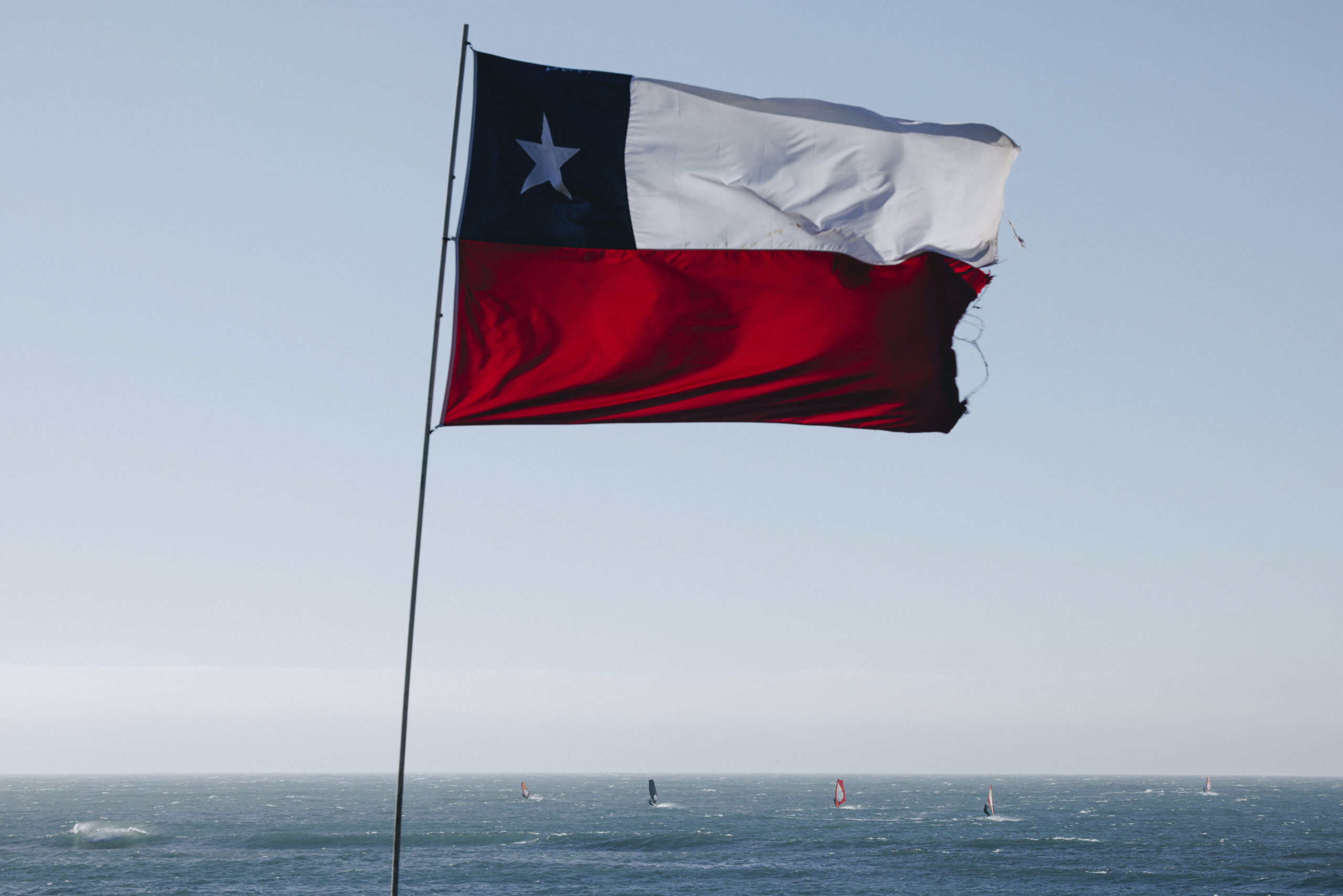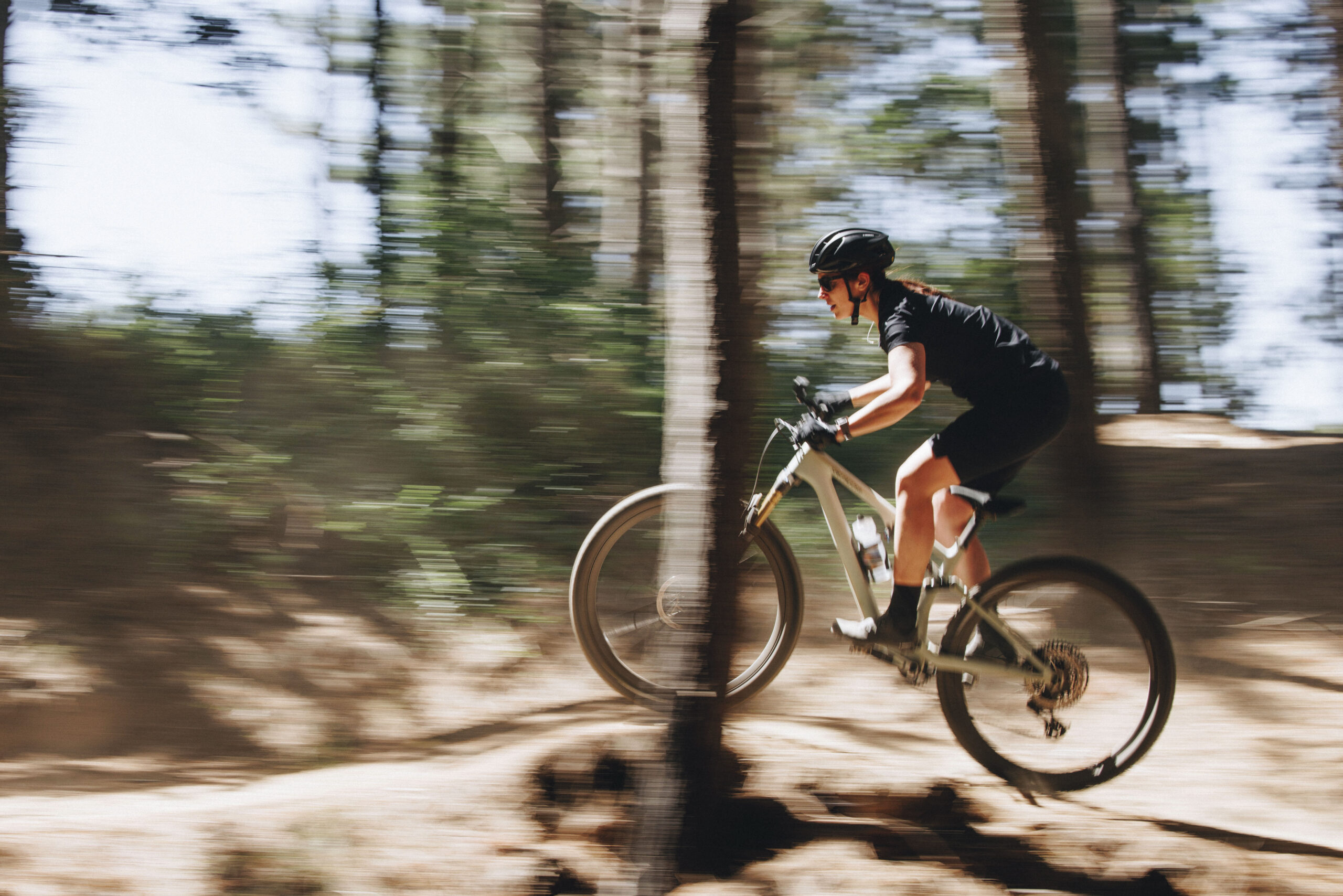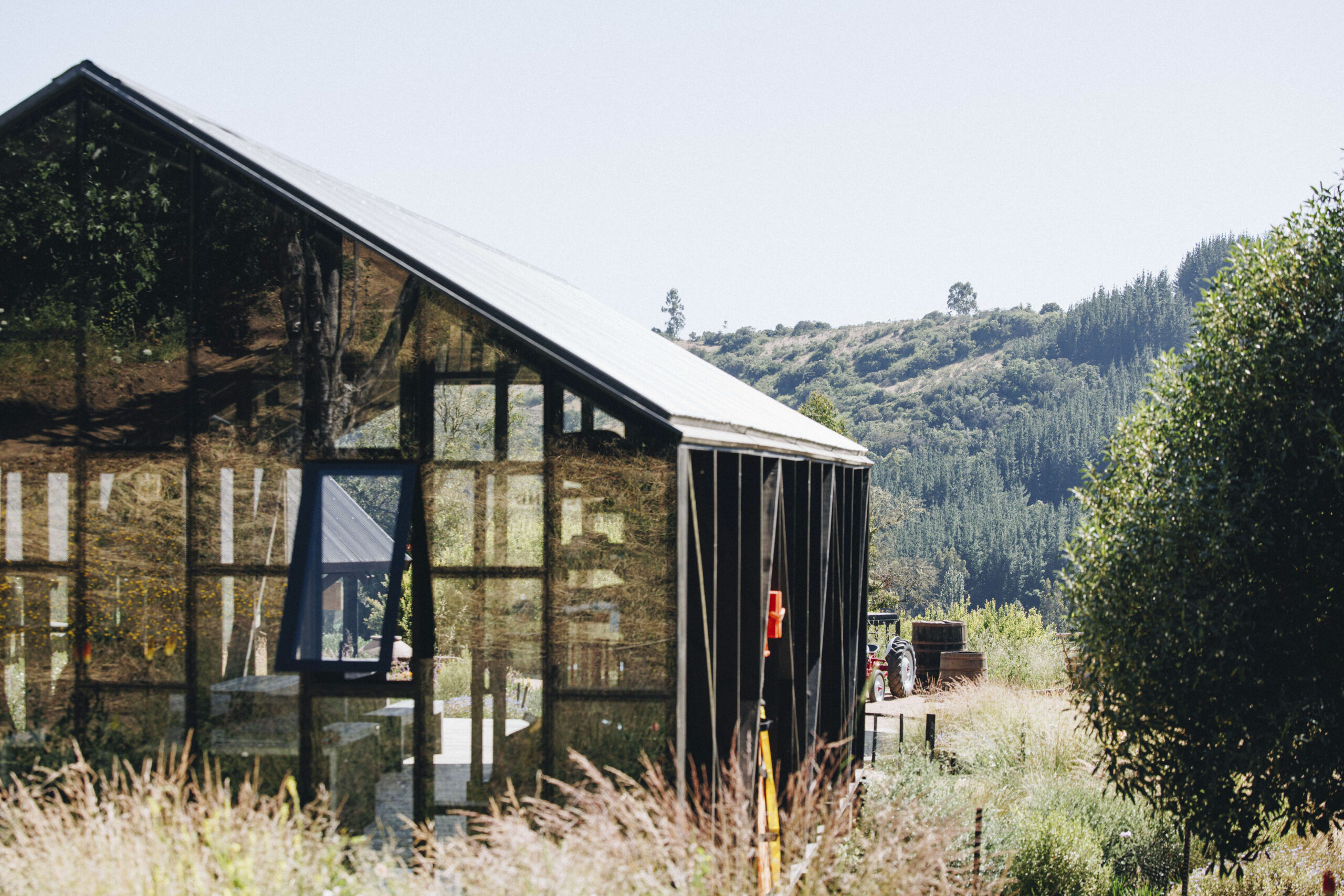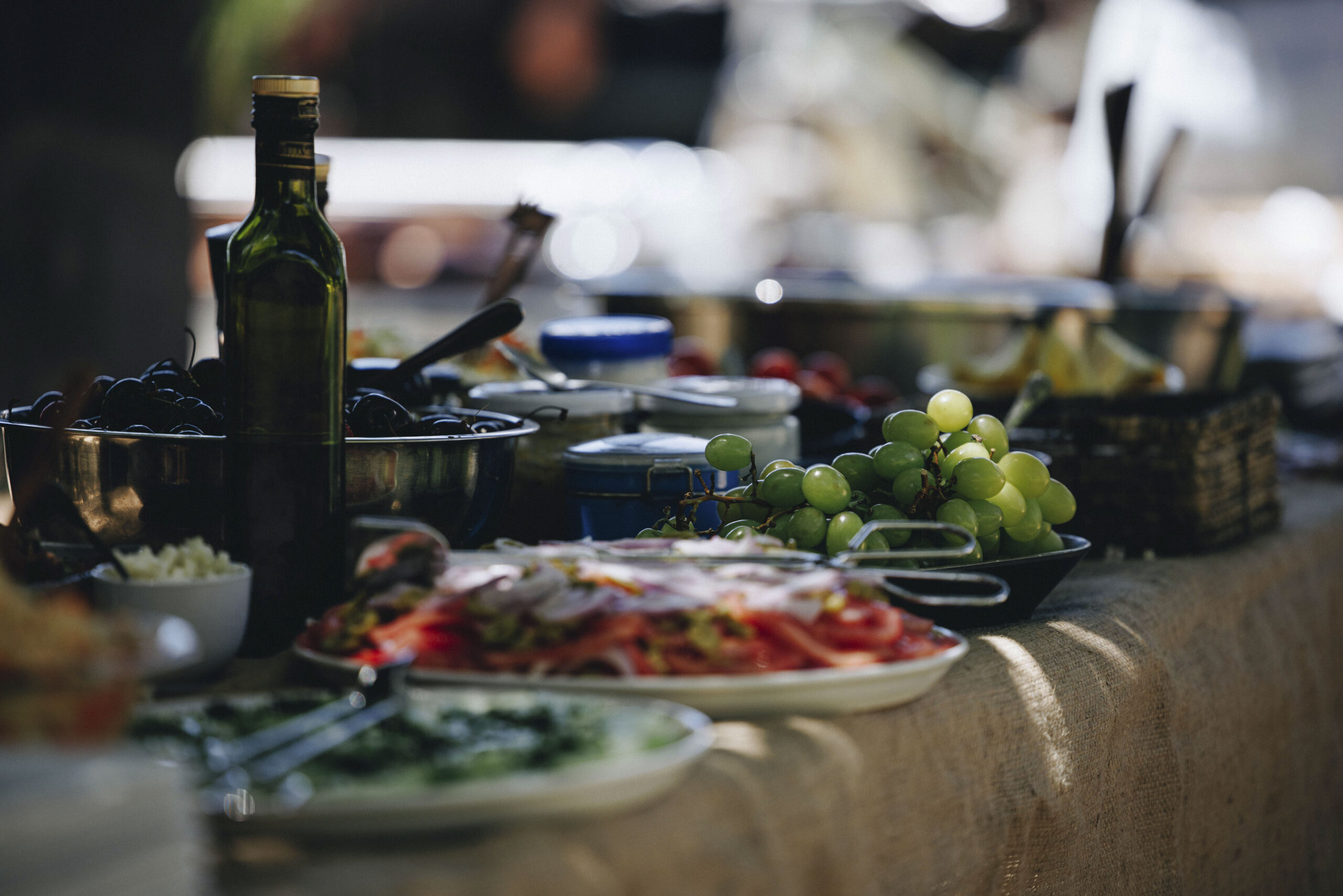Amanda heads to the other hemisphere for some good vegetables and vitamin D*
*Dust

Words Amanda Photography Etienne Schoeman
We haven’t even begun the descent to Santiago Airport when I get the first shock to my system. Mount Aconcagua pierces through the clouds and meets us at our cruise altitude; a sharp reminder that I haven’t been outside of Europe for a very long time, and the mountains elsewhere in the world are big enough to induce a large dose of existential joy. The Chilean woman I’ve spent the past 13 hours next to seems completely unfazed by this breathtaking view. Being capable of conversational Spanish has made for a pleasant flight as I’ve managed to trade all the cheesy foods from my meals with her fruit pots (a reminder to request vegan meals on the next flight), and we even managed to struggle through a discussion about the size of the aeroplane. “Si, es muy grande. Mi novio hace el… wing flaps…” She wasn’t too bothered about me trying to explain that my partner is a specialist engineer by pointing out of the window and flapping, though that I can appreciate. What I cannot fathom is why anyone would not be gobsmacked by this mountain in the sky, regardless of how often they see it.
Latest Singletrack Merch
Buying and wearing our sustainable merch is another great way to support Singletrack
Having silently fallen out with the Chilean woman occupying the window seat that she doesn’t deserve, I daydream of obnoxiously leaning over her as we come in to land… In reality, I politely peep past her, holding my breath, hoping for a better view of the Andean mountains that casually line the runway. I can already tell I’m in for a treat here in Chile.

Incomplete expectations
In a world of social media, Netflix documentaries and YouTube it seems highly unlikely for a person to be caught off guard when travelling somewhere new. Even the most basic level of research before your trip will flood your browser with images of the most famous landscapes and foods from any given place. When you think of Chile as a destination, I’m sure you’d accurately picture a dusty South American landscape with warm sands, agave plants and lush vineyards all protectively bordered by the Andes Mountains. Would you imagine there to be an abundance of wildflowers swarming with fat happy bees? Would you be prepared for such striking architecture that it would stop you in your tracks? These are just a couple of examples of things I hadn’t expected.


On the surface, Chile has the feel of southern Spain. The climate is a close match, the language the same, and the crops alike, bar the absence of citrus fruits. The roads are lined with fruit and vegetable stalls in varying states of permanence. Close to major cities the fruit stalls appear far more orderly and planned, a fixed location in a layby with space for customers to park up and purchase. As you head out into the wilderness the sporadic wooden barrows of whatever local crop has ripened are manned by patient and friendly farmers and, out here, away from the hustle and bustle of the cities, birds of prey become as common as seagulls on a UK beach. A view that initially feels like a rare moment will soon seem like something you could take for granted, though I certainly did not.

Flying the flag
Chileans seem very patriotic, flying the flag high throughout the cities and the rural areas. This comes across as an invitation, a huge welcome mat saying ‘Come on in friend’, though I can’t quite put my finger on why it feels this way. Some places you visit have flags that almost feel territorial, and I guess the general vibe of the area plays a part in that, but even in the most remote areas of Chile, these flags feel like a reassuring marker that your tourism is welcome. Of all the many reasons to visit Chile, mountain biking is extremely popular here; however, the opinion of local riders is that Chilean mountain biking is almost exclusively gravity riding. There are an impressive number of bike parks on the map throughout the length of the country, all with big banked berms, steep switchbacks and plenty of doubles. In fact, almost every jump we come across over the next three days is a double of varying scale. There’s not much in the way of progression for jumping: it’s all quite committing.
Sitting almost exactly halfway down the length of the Chilean coast is the village of Matanzas, in the Navidad area. Well known throughout the country for offering some of the best kite surfing, due to year-round high winds, there is an adventure vibe the moment you arrive here marked by very lived-in campervans, trucks with off-road tyres and plastered with friendly surfing-themed bumper stickers, and plenty of colourful signage outside beach hut bars offering Pisco Sours.

Matanzas is home to Hotel Surazo, named after the southerly winds that bring it so much business. An architectural masterpiece built in 2008, it was wiped out by a tsunami in 2010 and rebuilt to be even better than before. The boxy metal framework of the hotel is panelled with wood, making sure not to interrupt the trees that proved their worth standing up to the tsunami. Huge trunks cut through the restaurant and the patios outside the rooms, creating quite a contrast to the sharp man-made lines of the building. A small surf shop on site and a large beach bar with fire pits make this quite the hub for the local outdoor enthusiasts, yet it’s not just water sports attracting people to the area…
Soil searching
The pine forest directly across the road from the beach is home to OMZ Bike Park, a private park run by Matias Moreno. If a beaming smile and a vibrant jersey aren’t enough to get your attention, the buzzing succession of kids following him up the hill for coaching will do it.

OMZ Bike Park has a dense collection of trails cutting through the forest, varying in length and technicality. There are several wooden wall rides, wooden drops, nicely banked berms and plenty of flow sections. In late spring, the dusty dirt was at peak hero-spec – not too loose on top, just dry enough to give you speed and traction which lends itself well to learning how to handle a bike. The teams of young riders being coached here have a great playground for progression. And now with the aid of the Specialized Soil Searching programme, which supports trail-building communities worldwide, OMZ Bike Park has a new ~3km cross-country loop – the Alpaco trail – affectionately named in memory of an alpaca belonging to one of the trail builders.



The most testing feature on this new loop is a sharp climb that challenges your ability to choose the right gear for cranking up it, and aside from that, the trail is as technical as you want to make it. A short pumping section to a new rider can be a series of doubles to a more experienced one.
The high southerly winds are only apparent in the big open area at the top of the park, which can easily be avoided on a particularly windy day. The trees offer a significant break to the wind so efficiently that you’ll completely forget about it, only to be relieved by the cooling breeze as you near the edge of the treeline.
El Maiten
Having exhausted ourselves doing laps of the Alpaco trail and sampling the other trails within OMZ Bike Park, we take a 20-minute journey inland to El Maiten Bike Park. This is significantly bigger than OMZ, boasting 15 trails ranging from blue grade to double black. The signage is extensive, making it easy to figure out where you are and to give some reassurance that you aren’t lost in the wilderness, as some of the trails here really do feel remote.
The riding here is testing from the moment you pedal away from your vehicle, as a steep switchback climb takes you into the tree cover. The loose orange dirt doesn’t make it any easier but eventually the ascent leads into a warm atmospheric woodland where the light dances through the trees, and the only sounds are distant tyres rumbling down a trail or that of your own crunching through the dust. Arriving at the trailhead we’re spoilt for choice of trails to take, and throughout the course of the afternoon manage to work our way through several of the most popular runs. In a short time here it becomes clear that there’s a lot of variety in the trails and the builders have really made use of the landscape. There are steep loose sections held together by aggressive tree roots that envelope the entire track in places, and in contrast, the fast motorway sections of trails with huge jumps are well-groomed and feel much more open. Just as you begin to take the dry trails for granted, there’s a riverbed trail that has dried out to be nothing more than a stream, sitting in a shadowy gorge with moss and ancient trees hanging on the sides of it. The atmosphere at El Maiten is addictive – it feels somehow wild and deeply adventurous, despite being a built park with signs at every junction.

Back at the bottom of the trails, I wander off to find a toilet, passing by a brand new pump track and a huge outdoor seating area with a small shop attached. I turn the corner and have a rather surreal encounter with a local farmer. My “¿Dónde está el baño, por favor?”, is completely ignored and he shuffles me toward a modern glass building that looks to be full of junk. It is, technically, full of junk, but all salvaged from the area when the bike park was being built. There’s so much space here they have been able to dedicate a large building to function as a museum full of old farming machinery and various other pieces of local history.

The proud farmer eventually points me in the direction of a toilet block and thanks to my mini museum tour I am now at the back of the queue of an entire primary school’s worth of giddy children. They relish the opportunity to practise their English speaking with me and laugh at my attempts to answer in Spanish. I never quite mastered modifying nouns in my high school Spanish lessons.
Strawberry [Traffic] Jam
It’s not just bike parks here in Chile, though there are plenty of them. In order to get a taste of cross-country riding we bundle into a bus and head north along the coast toward San Antonio. This journey is where I see the extent of the modern architecture here, with Grand Designs-esque buildings teetering on the edge of cliffs, all proudly flying the Chilean flag.
Along the way, we hit some construction traffic, and promptly throw open the van sliding door for some fresh air. A cheery tanned face pops his head in and offers us a humongous punnet of fresh strawberries for $4,000. Upon seeing how many tired bikers are in the van, he does us a deal of three punnets for $10,000, and having made everyone’s day with this transaction, a green light sends us on our way. As I drip strawberry juice all over my knees, I wonder what the exchange rate might be for the Chilean peso. ($10,000 is about £8.65)

We’re headed to Parque Tricao, a nature reserve dedicated to the rescue and preservation of the native forest and vegetation in the central Chilean ravines. This is a gated reserve with payment on entry – it costs $3,000 per person to gain access to the MTB circuit, which sounds steep, but is equivalent to just over £2.50. The park offers far more than just mountain biking, which is in fact, a fairly recent development. There’s an aviary, botanical gardens, amphitheatre, white beach, a boat house, wetlands and so much more.
The mountain bike loop is 24km with a total elevation gain of 460m. It meanders through plantations, woodlands, past streams and onto sand dunes, giving a great insight into Parque Tricao. Some serious dedication to conservation, education and tourism is underway here. There’s a wealth of wildflowers and all the bees and butterflies they attract, and the fields are home to ground nesting birds. There are neat rows of crops sitting right next to the trail, which seems so trusting, yet sharing the space so closely gives a wonderful sense of community.
The loop itself is so much fun you’ll want to do laps of it, if the scenery hasn’t already drawn you in for a second run. For the most part this is a natural trail, but there are sections of woodwork to either add an optional challenge or to help you through some of the more challenging terrain, in particular the sand dune descent down to the beach.
We end the ride with refreshments at an on-site restaurant sitting on a balcony overlooking the boathouse watching a school of children on a day trip, learning about various wetland species. The outdoor skills and education on conservation for young children in Chile is refreshing – they really are putting a lot of focus on caring for their wildlife and creating a sustainable future.

Shopping list of pleasures
I’m sure it wouldn’t take much persuasion to get you interested in the southern hemisphere as a riding destination for the weather alone, but Chile has so much more to offer than just a warmer climate. The people are so welcoming and don’t make you feel like a tourist. It’s not about getting business from you – it’s about showing you their beautiful country. The tomatoes and avocados taste better than any I’ve eaten before, in fact most of the food here is in a league of its own. There’s a relaxed, yet focused attitude toward daily life here; it’s chilled out, there’s no sense of urgency, yet there’s so much being achieved in terms of preservation and tourism development. A lot of that focus is on mountain biking, so given that there’s already a huge selection of bike parks and natural riding available, it can only get better. One for the bucket list, I’d say.
Amanda’s trip was provided by Specialized.











